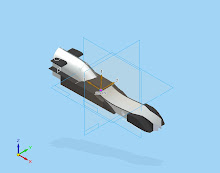Posted by,
Joel Yip- Design Engineer
After producing few designs of the car, its time to test their drag.But how?
Simple. By using a virtual wind tunnel.
What is a virtual wind tunnel?
Simulating Race Car Design with Computational Fluid Dynamics
CFD is a computer-based technology that studies the dynamics of all things that flow.In Formula 1 racing, CFD involves building a computer-simulated model of a race carand then applying the laws of physics to the virtual prototype to predict what the downforce or drag may be on various components of the car or how the car willrespond in various wind conditions, changing environmental conditions or on differentroad surfaces.
Aerodynamicists can use CFD to better visualize and enhance their understanding ofhow various designs will perform. It also allows them to experiment with more designvariables in a shorter amount of time until they arrive at optimal results.
CFD allows engineers to use computer software to divide components of a race carinto specific cells or grids. For each of those cells, supercomputers are then used tocalculate mathematical equations that compute the velocity and air pressure of thewind as it rushes over, under and around the specified components of the race car.Aerodynamicists can use the resulting data to compute the downforce, drag andbalance the race car will experience, depending on different environmental and roadconditions and different design variables. When the calculations are finished, theaerodynamicists can analyze the results either numerically or graphically.
The Nitrates us CFD as the first step in their design and testing process,since it allows us to experiment with more design variables more quickly thanbuilding a physical model.
What Comes After the Virtual Wind Tunnel?
Our second step is to build a physical scale model of thecar and place it in a wind tunnel, where we can conduct further research andcontinue to assess the car's aerodynamic efficiency. After these two steps are completed, our final step is to test and assess the car on the track itself.
In the ongoing race to shave hundredths and thousandths of seconds off a race car'stime, Formula 1 teams seem set to continue their focus on advanced technology toaccelerate their design efforts.
Tuesday, July 8, 2008
Subscribe to:
Post Comments (Atom)





















No comments:
Post a Comment